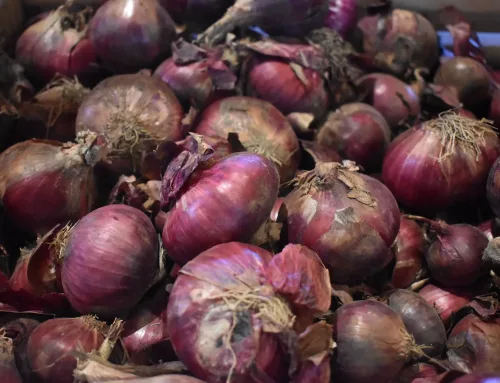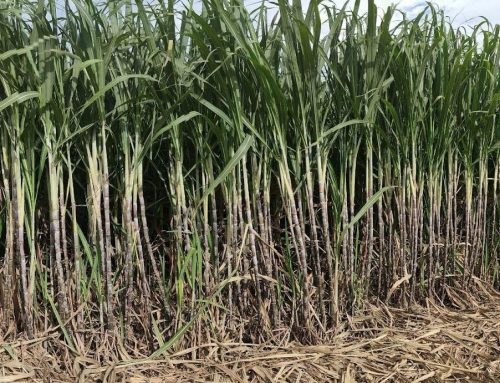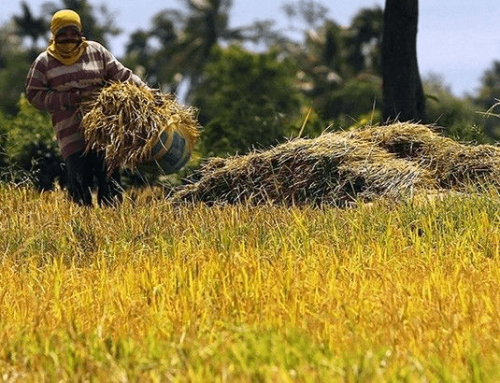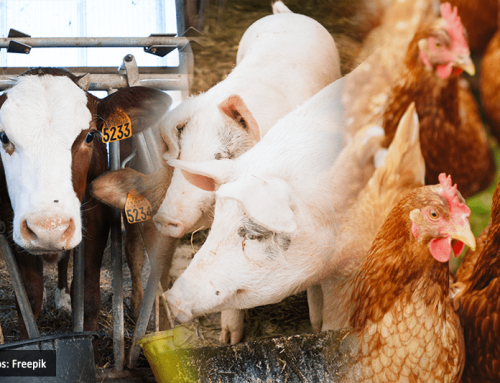In this Article
Explore the latest ginger market trends. These highlight significant supply shortages due to adverse weather conditions and an increase in demand, resulting in price surges that impact farmers and consumers and prompt government interventions for stabilization.
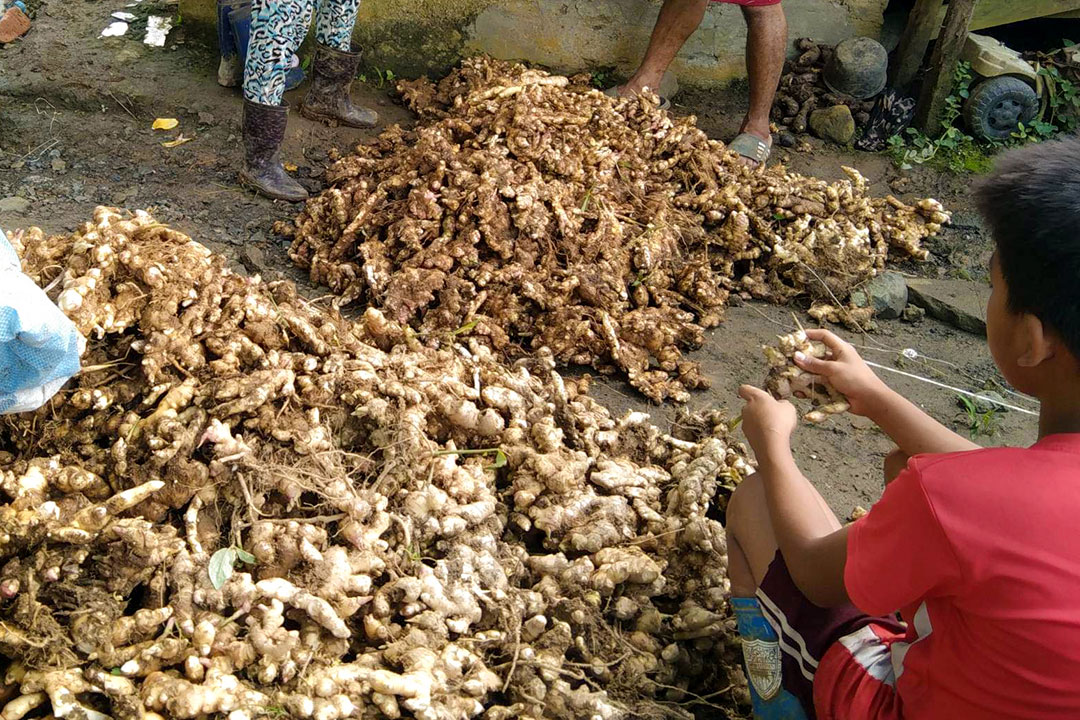
Surge in Prices of Ginger
The initial rise in ginger prices was first reported in June (see article by clicking this link: https://tinyurl.com/AABHMarketAdvisory006), reaching Php 180 to Php 300 per kilogram (kg). This October, retail prices hit Php 220 to Php 350 per kg, which is triple the amount in 2023 at Php 110 per kg (Table 1). Department of Agriculture (DA) Assistant Secretary Arnel de Mesa reported a sharp increase in ginger retail prices in Metro Manila’s public markets attributed to rising demand from food manufacturers and supply shortages caused by typhoons and the early effects of El Niño, which have impacted key production areas like Nueva Vizcaya and Quezon.
Table 1. Highest Retail Price of Ginger per Kilogram in Metro Manila, 2023 – 2024
|
Highest Price in 2023 (in Php/kg) |
Highest Price as of October 17, 2024 (in Php/kg) |
Price Increase (in Php/kg) |
| 110 | 220 – 350 |
110 – 240 |
Source: DA, 2024
Ginger Market Update: Decreasing Supply and Increasing Prices
The ginger market continued to experience severe constraints in 2024. The Philippine Statistics Authority (PSA) reported a substantial 25.19% decline in ginger production from the first quarter (Q1) to the second quarter (Q2) of 2024. This drop in production was largely attributed to the adverse effects of recent typhoons, which damaged ginger harvests in key producing areas like Nueva Vizcaya and Quezon. Additionally, the El Niño phenomenon worsened the supply shortages, further impacting the overall supply of ginger in the market.
Table 2. Quarterly Ginger Production, Q1 & Q2 2024 (Metric Tons)
|
Q1 2024 |
Q2 2024 | Difference |
| 9,836 | 7,359 |
2,477 (25.19%) |
Source: OpenSTAT, 2024
The production decline triggered price increases, which were still observed in the third quarter (Q3) of 2024. Data from the Price Monitoring Database of the Department of Agriculture (DA) showed a significant increase in the average retail price of ginger in Metro Manila from July to September. This brought the average retail price for Q3 to Php 232.08 per kg, up from Php 227.25 per kg in the previous quarter. This follows the upward trend observed earlier in the year, as ginger production declined sharply due to multiple typhoons and the El Niño phenomenon.
Table 3. Average Retail Price of Ginger in Metro Manila, July – September 2024 (Php/kg)
|
Ginger |
July | August | September | Q3 Average |
| Retail Price | 229.82 | 224.90 | 241.51 |
232.08 |
Source: DA, 2024
Government Interventions to Improve Ginger Production
- DA’s Program to Increase Production and Stabilize Prices
Expansion Plan for Production Areas
The growing demand for ginger, both as a traditional ingredient in Filipino dishes and as a specialty product for natural remedies, is driving price increases, with prices in Metro Manila already reaching Php 300 per kg. According to Agriculture Undersecretary Cheryl Marie Natividad-Caballero, areas planted with ginger increased from 4,057.30 hectares (ha) in 2022 to 4,816.26 ha in 2023, reflecting significant growth. Despite this expansion, ginger yield declined from 7.1 MT per ha (MT/ha) in 2022 to 6.1 MT/ha in 2023, though overall production slightly increased by 2%, reaching nearly 29,380 MT in 2023 compared to 28,806.83 MT in 2022. To support farmers, DA plans to expand areas for ginger production to meet rising demand from food and beverage manufacturers. The agency also aims to source quality planting materials and facilitate better access to financing through the High-Value Crops Development Program (HVCDP).
Importation of Ginger to Augment Supply
To address the supply shortage and rising prices of ginger, the DA has turned to imports, with 4,200 MT of the expected 13,725 MT already arriving in the country. Most of these imports are from China, but additional sources have been approved from Vietnam and Indonesia, with the Bureau of Plant Industry (BPI) recently authorizing the importation of 50 MT from each country to diversify supply. The DA anticipates that as these imports are distributed throughout October, prices will stabilize and potentially drop to below Php 100 per kg. Furthermore, the inflation rate for spices, including ginger, surged to 16.5% in September, according to PSA, further emphasizing the urgent need for government intervention to curb the rising costs of ginger in the market.
- DOST-PCAARRD Initiatives for Ginger Production and Processing
Hybrid Dehydrator
In response to the increasing demand for ginger by the food processing industry, the Department of Science and Technology – Philippine Council for Agriculture, Aquatic, and Natural Resources Research and Development (DOST-PCAARRD) supported the development of a hybrid solar-powered dehydrator machine. This machine was developed by Dr. Renerio S. Mucas of Iloilo Science and Technology University (ISAT U), and it aims to enhance ginger drying processes and improve product quality through precise control of temperature and humidity. The hybrid dehydrator, powered by solar energy with electric backup, automates drying for ginger and turmeric, addressing inconsistency and product degradation during rainy seasons.
The dehydrator has been well-received by industry partners, including food processors in Iloilo, Antique, and Occidental Mindoro. It can be used to dry other products such as bananas, turmeric, and lamayo fish, among others. With over 20 units produced and distributed as of 2023, the technology has shown financial and economic viability, garnering interest from small-scale businesses and institutions. This initiative supports the ginger processing industry by providing energy-efficient, high-quality drying technology that enhances the competitiveness of local farmers and producers.
Seed Multiplication for Future Cultivation and Production
Another DOST-PCAARRD-funded project on ginger, in partnership with Mariano Marcos State University (MMSU), focused on an integrated crop management system. Led by Dr. Dionisio Bucao, the project aims to increase yields through the application of improved nutrient management techniques and the use of Carrageenan plant growth promoter (CPGP). Additionally, the initiative includes efforts to multiply ginger seeds, alongside other crops, such as chilies and turmeric, to support future cultivation and production. The project is expected to be completed by April 2025.
Ginger Processing
Implemented by DOST IV-A, the project titled “Community Empowerment through Science and Technology (CEST) Program for Community-based Forest Management (CBFM) Sites” supported ginger and turmeric production in CBFM sites. Completed in December 2022, the initiative established a ginger and turmeric brew production facility in Rosario, Batangas. It provided capacity-building, technology transfer, and business development support to local farmers, enabling them to produce value-added ginger products and improve their livelihoods and community resilience. According to the latest report provided by the project team in December 2023, the equipment purchased under the project has been donated to the beneficiaries, and the facility has been operational.
Market Outlook
Due to ongoing supply challenges, the ginger market is expected to remain unstable in the short term. However, government interventions may provide relief in the coming months. Imported ginger is anticipated to stabilize prices by late October, though prices are unlikely to fall below Php 100 per kg until supply fully recovers. The increased domestic production and improved processing technologies may help meet the increasing demand from different buyers. Farmers can expect continued demand, while consumers may face elevated prices until supply fully recovers. It may take time for these government interventions to fully address the supply-demand situation and bring prices back to normal levels.
References: Arcalas, J.E. (2024, October 10). Ginger prices triple to P300, seen to soften this month. PhilStar. Retrieved October 10, 2024 from https://www.philstar.com/business/2024/10/10/2391329/ginger-prices-triple-p300-seen-soften-month
Cariaso, B. (2024, October 17).Retail price of ginger hits P350/kilo. PhilStar. Retrieved October 17, 2024 from https://www.philstar.com/headlines/2024/10/17/2393109/retail-price-ginger-hits-p350kilo
DA Bantay Presyo. (2024, October 12). DA Price Monitoring Database. Retrieved October 14, 2024 from https://www.da.gov.ph/price-monitoring/
DOST Batangas. (2023, December 12). Farmers assoc. In Rosario, Batangas inaugurates ginger-turmeric brew, coco vinegar production facility. DOST – Batangas Facebook Page. REtrieved October 15, 2024 from https://www.facebook.com/dostbatangasph/posts/pfbid02SqUcntwVd2Gof3mPSHaMcTWE4jDKV2jFX4f9SWHRHar5m8SEuCq7jjp9hN5JYpF7l
Halili, A. (2024, October 9). Indonesia, Vietnam eyed as alternative sources of ginger. Business World. Retrieved October 9, 2024 from https://www.bworldonline.com/economy/2024/10/09/626879/indonesia-vietnam-eyed-as-alternative-sources-of-ginger/
Pelonia, A. (2024, June 12). Government sets sights on expanding ginger production areas. Business Mirror. Retrieved October 14, 2024 from https://businessmirror.com.ph/2024/06/12/government-sets-sights-on-expanding-ginger-production-areas/
PSA. (2024, August 30). Other Crops: Volume of Production, by Region and by Province, by Quarter and Semester, 2010-2024. OpenSTAT. Retrieved October 14, 2024 from https://openstat.psa.gov.ph/PXWeb/pxweb/en/DB/DB__2E__CS/0062E4EVCP1.px/table/tableViewLayout1/?rxid=df5a7b12-e599-4cce-82ec-c0a4e3c998e2
PSA. (2024, August 30). Condiments: Farmgate Prices by Geolocation, Commodity, Year and Period. OpenSTAT. Retrieved October 14, 2024 from https://openstat.psa.gov.ph/PXWeb/pxweb/en/DB/DB__2M__NFG/0032M4AFN04.px/table/tableViewLayout1/?rxid=ffb4c0a6-536b-4429-a69e-a50c406eff8a
PSA. (2024, August 30). Condiments: Wholesale Selling Prices of Agricultural Commodities. OpenSTAT. Retrieved October 14, 2024 from https://openstat.psa.gov.ph/PXWeb/pxweb/en/DB/DB__2M__NWS/0052M4AWA04.px/table/tableViewLayout1/?rxid=ffb4c0a6-536b-4429-a69e-a50c406eff8a
PSA. (2024, August 30). Condiments: Retail Prices of Agricultural Commodities by Geolocation, Commodity, Year and Period. OpenSTAT. Retrieved October 14, 2024 from https://openstat.psa.gov.ph/PXWeb/pxweb/en/DB/DB__2M__2018/0042M4ARA04.px/table/tableViewLayout1/?rxid=ffb4c0a6-536b-4429-a69e-a50c406eff8a
Sembrano, D.L.C. (2022, April 5). NICER PROGRAM SET TO BOOST GARLIC AND OTHER AGRI-FOOD CONDIMENTS INDUSTRY. PCAARRD Portal. Retrieved October 15, 2024 from https://www.pcaarrd.dost.gov.ph/index.php/quick-information-dispatch-qid-articles/nicer-program-set-to-boost-garlic-and-other-agri-food-condiments-industry
Valdeavilla, T.M.N. and Domingo, O. (2024, August 9). HYBRID DEHYDRATOR TO WEATHERPROOF THE WESTERN VISAYAS’ FOOD PROCESSING INDUSTRY DURING LA NIÑA. PCAARRD News. Retrieved October 14, 2024 from https://www.pcaarrd.dost.gov.ph/index.php/quick-information-dispatch-qid-articles/hybrid-dehydrator-to-weatherproof-the-western-visayas-food-processing-industry-during-la-nina?fbclid=IwY2xjawF6mipleHRuA2FlbQIxMQABHRh2uVOt7j1rsGK_tmqQe1IRaIEPDwpZLP6-Zke129ZdBBWs2g7ZBGQ7Bw_aem_Xk72s_Gt4VIqImbThmKAMQ

